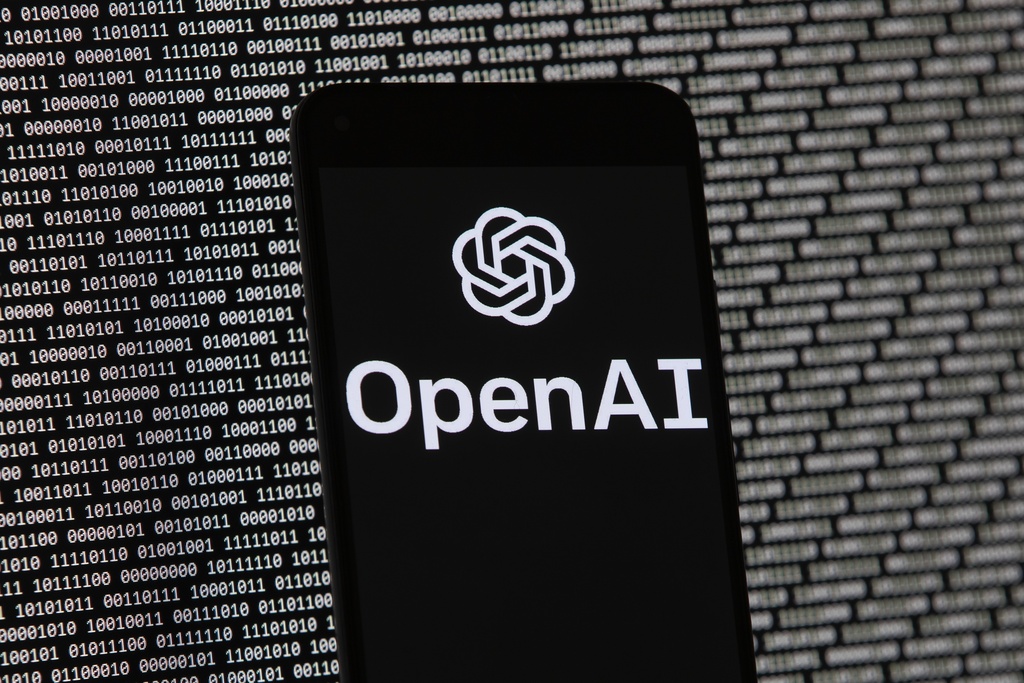How OpenAI Evolved from Nonprofit to $157 Billion AI Giant \ Newslooks \ Washington DC \ Mary Sidiqi \ Evening Edition \ In 2016, OpenAI, a nonprofit organization focused on advancing artificial intelligence, applied for tax-exempt status with the IRS. Originally structured with no commercial ambitions, the nonprofit aimed to develop AI for the benefit of humanity. Since then, OpenAI has evolved dramatically, launching successful commercial products like ChatGPT and forming a for-profit subsidiary valued at $157 billion. Despite the shift, OpenAI insists that its mission to serve humanity remains unchanged.
OpenAI’s Journey from Nonprofit to AI Giant: Quick Looks
- Founded in 2016: OpenAI originally applied for tax-exempt status with a focus on non-commercial research to benefit humanity.
- No Commercial Ambitions Initially: In its IRS application, OpenAI stated it had no plans to develop commercial products, a stance that has since shifted.
- Evolved Mission: OpenAI now operates both a nonprofit and for-profit subsidiary, with commercial partnerships fueling its expansion.
- IRS Reporting: OpenAI complied with nonprofit regulations, reporting changes in structure and activities on its annual tax returns.
- Notable Products: Since launching ChatGPT in 2022, OpenAI’s technology has far surpassed its original research goals.
Deep Look
Back in 2016, a newly formed organization called OpenAI applied for tax-exempt charitable status with the Internal Revenue Service (IRS). At the time, the organization was incorporated in Delaware and headquartered in Mountain View, California, with an ambitious mission: to advance artificial intelligence (AI) in a way that benefits humanity as a whole, “unconstrained by a need to generate financial return.” This vision, laid out in its application to the IRS, seems quaint when contrasted with what OpenAI has since become—a global tech giant with a for-profit subsidiary recently valued at $157 billion by investors.
OpenAI’s early assets included a $10 million loan from one of its founding directors, Sam Altman, who now serves as CEO. The nonprofit’s initial research goals were modest compared to the sophisticated AI tools it develops today. In its IRS application, OpenAI stated that it aimed to train an AI agent to solve a variety of games and to create a robot capable of performing basic housework. Additionally, it expressed an interest in building technology that could follow complex instructions in natural language—a far cry from the capabilities of today’s AI systems like ChatGPT, which can generate human-like text, create images from descriptions, and even write code.
Early Nonprofit Mission and Goals
When OpenAI applied for nonprofit status, it was clear about its charitable intentions. The organization told the IRS it did not plan to enter into joint ventures with for-profit organizations, nor did it intend to develop commercial products. Its stated goal was to share its research openly with the public, making its findings and software available on a nondiscriminatory basis. At the time, OpenAI stressed that its research would be freely accessible and released under open-source licenses, with the nonprofit retaining ownership of any intellectual property it created.
This mission aligned with the organization’s initial ethos of focusing purely on scientific advancement without the pressure of commercial interests. OpenAI’s corporate structure, as outlined in its IRS application, appeared conventional for a research-focused nonprofit, according to Andrew Steinberg, a counsel at Venable LLP and an expert on nonprofit organizations. If any changes occurred in its structure or operations, OpenAI would be required to report those modifications in its annual tax returns—a standard practice for tax-exempt entities.
Evolution to a For-Profit Structure
However, as OpenAI’s technology advanced, so did its strategy. In 2019, OpenAI transitioned to a hybrid model, establishing a for-profit subsidiary called OpenAI LP to support its mission. This marked a significant departure from its original nonprofit-only structure. The shift allowed OpenAI to attract investors, including high-profile firms like Microsoft, while also pursuing commercial ventures that would further its research goals.
OpenAI spokesperson Liz Bourgeois acknowledged the evolution, stating that while the organization’s methods have changed over time, its core mission has remained constant: to advance AI for the benefit of humanity. Bourgeois explained that the decision to engage in commercial partnerships was made because it was seen as the best way to achieve OpenAI’s goals. By developing products that help people harness the power of AI to solve problems, OpenAI believes it is fulfilling its original mission.
One example of this evolution is ChatGPT, the AI chatbot that became a sensation after its release in 2022. The tool, along with other OpenAI products like the DALL·E image generator, has far surpassed the organization’s early technical benchmarks. OpenAI’s products now include highly advanced AI systems capable of generating realistic images, writing complex code, and interacting with users in increasingly sophisticated ways.
Intellectual Property and Commercial Ambitions
Despite the nonprofit’s initial commitment to non-commercial activities, OpenAI has since engaged in numerous commercial partnerships. These partnerships have sparked questions among nonprofit experts about the boundaries between nonprofit and for-profit activities. While OpenAI originally stated it would not develop commercial products, Bourgeois clarified that the organization now sees product development as integral to its mission. By offering some products for free, OpenAI continues to promote accessibility to its technology, but its commercial ventures help sustain and expand its research.
In its original IRS filing, OpenAI also expressed its intent to retain ownership of its intellectual property. As OpenAI continues to grow, the value of this intellectual property has become significant, especially given the organization’s advancements in AI technology. If OpenAI decides to restructure its operations further, questions about which entity—nonprofit or for-profit—owns the intellectual property could become critical. In fact, Sam Altman confirmed in September that OpenAI is considering altering its corporate structure, which may prompt further scrutiny of how its intellectual property is managed and monetized.
Compliance with Nonprofit Rules
Nonprofit organizations like OpenAI are subject to strict rules about how they interact with for-profit entities and how their activities align with their charitable missions. While OpenAI’s structure has evolved, experts like Steinberg note that the organization has adhered to the reporting requirements and regulatory guidelines that govern nonprofit entities. OpenAI’s decision to expand into for-profit ventures was a significant development, but not an uncommon one for organizations that aim to scale their impact beyond the limitations of traditional nonprofit models.
However, the scale and scope of OpenAI’s current operations—particularly its interactions between the nonprofit and for-profit arms—have raised some eyebrows in the nonprofit sector. Legal and nonprofit experts continue to watch OpenAI’s progress closely to ensure that its for-profit activities do not overshadow its charitable mission or inadvertently result in private benefits to individuals or investors, which would violate nonprofit regulations.
The Future of OpenAI
As OpenAI looks to the future, its leadership remains committed to advancing AI for the benefit of humanity, even as it navigates the complexities of operating in both nonprofit and for-profit realms. The organization’s for-profit subsidiary has allowed it to secure significant investments and pursue commercial projects that accelerate AI development. However, as OpenAI’s influence and size continue to grow, so too does the scrutiny over how it balances its nonprofit roots with its commercial ambitions.
OpenAI’s rapid rise, from a research-focused nonprofit to one of the world’s leading AI companies, reflects the incredible speed at which AI technology has evolved. As the organization considers further changes to its corporate structure, the nonprofit world will be watching closely to see how OpenAI maintains its commitment to benefiting humanity while navigating the challenges of operating in both charitable and commercial spaces.







